 | 330 GT Registry |  |
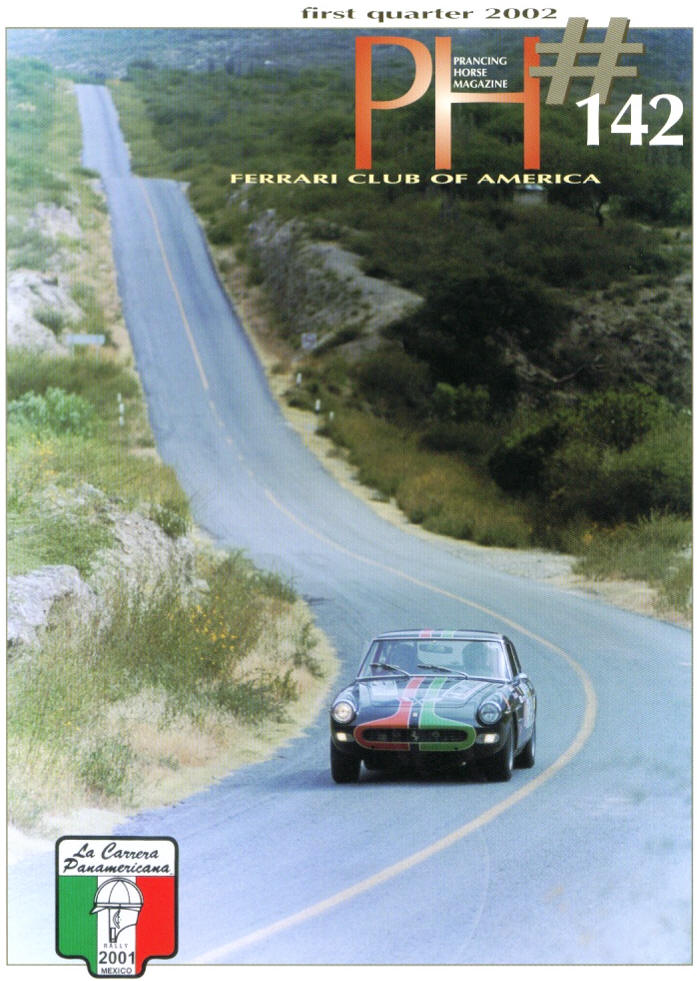
La Carrera Panamericana
by Alan Wilson photos by author and Zack Johnson
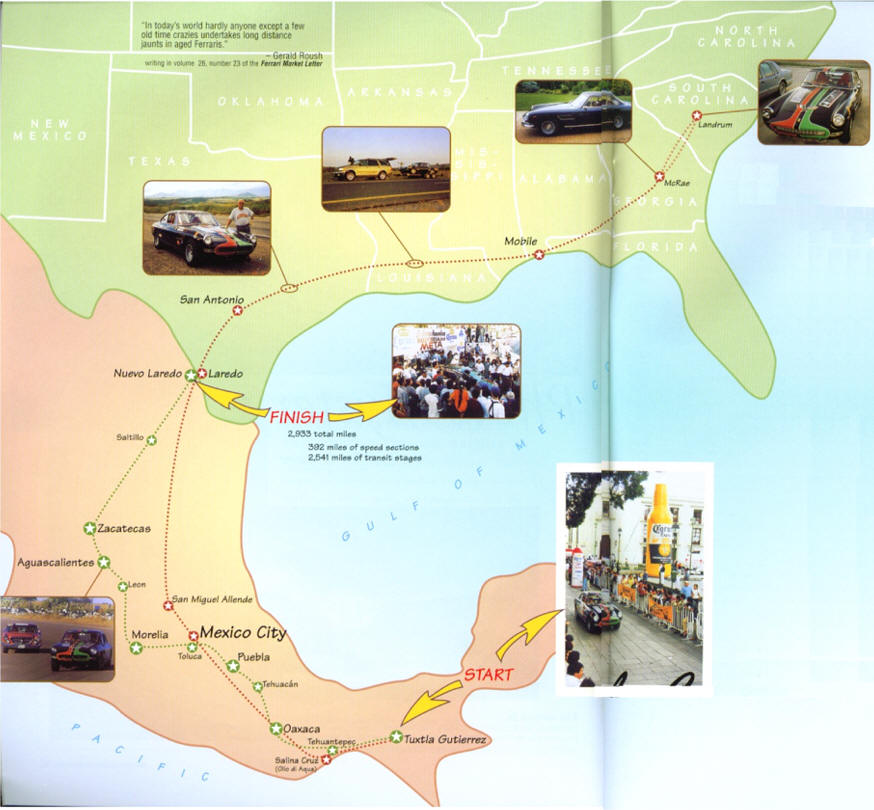
Do You Remember how you felt standing on the high dive when you were about nine years old, peering out over the great unknown? Well, that’s pretty much the way I felt the day I decided to run La Carrera Panamericana, the modern-day version of the great Mexican road race of the 1950s. Urged on by fellow Ferrari owner, Tim Gallagher, a.k.a. “G-man” I was in the deal. Getting the 330 out of the barn and prepared for the race was one thing — negotiating our registration through the race’s American promoter, one Loyal Truesdale, was quite another. Truesdale, a part-time resident of Mucho Mescale, Mexico and La La, California is a certifiable free spirit — a man with a long history of racing really big motorcycles without a helmet. When I learned that he could be reached best either by e-mail or by Palm reader, it dawned on me that this might not be exactly like registering for the FCA’s annual salute to Enzo’s birthday over at the yacht club.
Having been chronicled in Road & Track, Motto Guzzi Quarterly, and, very likely, Abnormal Psychology, Loyal comes to the table with a decidedly unique persona: a phantom shrouded in mystery who somehow co-ordinates, facilitates and manages to get the word to the 25 or so American teams that go to Mexico each Fall for the event. “Is this Loyal,” I asked, having finally tracked him down. The guy laughs a great laugh! “Well, it was until a minute ago when some dude called from Las Vegas to tell me that his 1954 Dessoto is really a damn Dodge Dart. But, hell, it’s a Hemi so I guess that’ll be cool” That’s registration — things got worked out and stuff like “how much does it cost” “when exactly is the thing” and “where are we supposed to meet” just got taken care of “Loyally” and in good order. It was a little like the rules for Cricket, I decided — you suit up, keep your wicket from getting sticky and somehow everything makes sense when the game is over! Cricket’s a big game in McRae, Georgia where I live, so it was easy to get in sync with my man Loyal once we got tuned in just right.
There is an actual requirement that the participating cars have some celestial connection with the cars and the era of the original La Carrera. This formula, not surprisingly, has some decidedly “Loyalistic” characteristics. By virtue of being an old Ferrari in the first place, the 330 (built from 1964 to 1967) stands a good chance of being accepted — the mid-sixties is the cut off as far as age is concerned, and the Type 209 engine connects the car to the early days in some magical way (most probably lack of oil pressure). Anyway, we finally got approval for the car and sent out check out to La La. And eventually we got an e-mail from old Loyal with a picture of him “sleeping” in a barber’s chair somewhere in Mexico with a sign around his neck that said, “Come on down, amigos.” Hey, we were on our way!
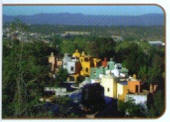 While the registration process worked its way along, Ned Gallagher, sole proprietor of what we lovingly call “Unlikely Restorations” up in Landrum, South Carolina, began to assess the condition of 8779. My long held suspicions were confirmed — we had indeed been enjoying the thrills of a strong VII Ferrari! Alas, one piston was toast and things like valves, camshafts and the head were in no shape to take Ned to the TastyFreez much less haul 700 pounds of aging tifosi all over Mexico. Ned was a real gentleman, kind and respectful, as he gave me his verdict. “The SOB’s dead as a hammer, boss.”
While the registration process worked its way along, Ned Gallagher, sole proprietor of what we lovingly call “Unlikely Restorations” up in Landrum, South Carolina, began to assess the condition of 8779. My long held suspicions were confirmed — we had indeed been enjoying the thrills of a strong VII Ferrari! Alas, one piston was toast and things like valves, camshafts and the head were in no shape to take Ned to the TastyFreez much less haul 700 pounds of aging tifosi all over Mexico. Ned was a real gentleman, kind and respectful, as he gave me his verdict. “The SOB’s dead as a hammer, boss.”
Reflecting on this news, I did the only thing I knew to do — I called Ted Rutland in Atlanta, the king of old parts for old farts. Maybe he had a box of old 330 parts lying around that he wanted to give away or maybe he knew somebody in Idaho who had a good engine they didn’t need any more. Maybe it wouldn’t be too bad... yeah, right! Ted smoked quietly over the phone, inhaled deeply as he listened to the situation. He put me on hold, used the other phone line to register both the little Rutlands in private school, then got back to me saying, “You bet I can help you, Fabio. No problemo.” That, I learned later, was not a little linguistic salute to our big Mexican adventure — “No problemo” is actually Ted’s special way of saying, “Bend over.”
So, seasons changed, markets crashed, and flowers which had bloomed and died once again turned their little faces to the east in anticipation of another Spring. Up in Landrum, 8779 wore its winter coat of dust on body parts spread all over the stockyard of “Unlikely Restorations.” Every once in awhile a box of tiny springs would arrive and Ned would call to ask that I send funds approximately equivalent in price to a pair of Tiffany earrings. I was grateful that the car required only 12 sets of these things.
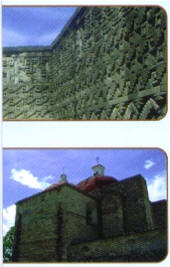 Finally, after about a year, Ned called and asked me to hold the phone. “Listen to this, Fabio” he shouted from across the room, and I heard something running on its own steam, bubbling and gurgling and cracking and sounding as if it may have 12 cylinders. “Is that what I hope it is, or has your ex-wife brought her mini-van in for a tune up?” I asked tearfully. “No, boss, that’s your car. You’ll be off to Mexico in another year or so, just as soon as I get all this suspension stuff figured out.” As more tears fell, I thought, it’s nice to be called “boss.”
Finally, after about a year, Ned called and asked me to hold the phone. “Listen to this, Fabio” he shouted from across the room, and I heard something running on its own steam, bubbling and gurgling and cracking and sounding as if it may have 12 cylinders. “Is that what I hope it is, or has your ex-wife brought her mini-van in for a tune up?” I asked tearfully. “No, boss, that’s your car. You’ll be off to Mexico in another year or so, just as soon as I get all this suspension stuff figured out.” As more tears fell, I thought, it’s nice to be called “boss.”
Now to put things in medical terms for all you doctors out there: our patient had the equivalent of a heart lung replacement, liver transplant, hip implants and its tubes tied to prevent any chance of it reproducing. Oh yes... and a damn fine nose job (be still my foolish heart)! Then on October 16, 2001, 8779 showed up in McRae all painted up with red and green stripes, bumpers removed, red racing seats and a roll cage. It was beautiful perched on its trailer pulled by my pal Sonny Enloe who had graciously agreed to make the little drive down to Mexico with me. Wistfully, I felt all was well — Ned had truly succeeded in making a tired old prancing horse into a cool new pony.
Kissing my wife goodbye and pulling out onto the highway with 8779 in tow, I embarked with Mr. Enloe on what was to become the ultimate road trip. We headed west on I-0, driving G-Man’s wife’s new Ford Expedition, listening to James Brown and making tracks for the border at Laredo, Texas. Only 1,500 miles lay between us and a planned rendezvous with Loyal Truesdale, who had allegedly arranged a convoy at the border for those seeking company for the crossing and the trip south. Sadly, we learned upon our arrival, Loyal had been “tied up” and might be delayed for some time. No matter. Sonny and I, both men of action and experience, would just do this little crossing on our own and be on our way. It was 4:00 a.m. on Saturday morning so traffic wasn’t real bad at the border in Nuevo Laredo. There we learned the true value of Ferrari hats and Sonny’s NYPD T-shirt. These things seemed to have more currency as documentation than stuff like titles and registrations. (Hey, we’re in Mexico.) All went like clockwork until we ran into a little rule that says a tow car, trailer, and towed vehicle must all be owned by the same person. So as the blood red sun crept over the Rio Grande, I signed a couple of titles (goodbye, 8779, it’s been real) gaining permission to proceed. Smiling broadly, my shirtless companion and I waved farewell — “Muchos gracias, amigos,” we yelled out the windows. “No problemo,” came back to us from the the staff all neatly attired in Ferrari Club of America hats as the chief inspector, a real big guy, squeezed himself into Sonny’s shirt.
We found that our original route, though much discussed with more experience people (like the girl at the Gas’nGo in Laredo) wasn’t too swift an idea. Rather than going down the east coast as we first planned, it’s apparently much better to head straight down the center of the country, taking advantage of the new toll roads and thus avoiding much of the stray burro and free-ranging cattle population. This we elected to do. So on Saturday morning, October 19, we were making good time over pretty nice roads and starting to think that we just might live. Along the way we began to see other stalwarts pulling old cars and figured that we were in the company of other Carrera guys — either that or there was one hell of a demolition derby somewhere ahead and we were headed toward that too. 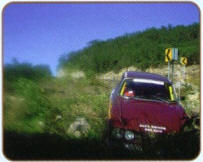 At lunch we met a bunch of guys from Austin, Texas pulling a nice little 1965 Alfa. They offered to guide us to San Miguel Allende, a beautiful little mountain town where they were to meet with friends. Our new compadres delivered us to a very nice hotel in the town (with the requisite guarded parking) and invited us to join them for drinks and dinner. I was thinking it was great that we had run into these nice guys ... we would be mighty lucky to have the benefit of the local knowledge and all that. But that feeling quickly faded when I asked Alfa owner, Peter, if he knew a good way to get through Mexico City with getting killed. The sum total of his response was this — he took a big swig of his Corona and said, “You bet I do, Fabio. No problemo.” I whispered to Sonny, “Get out the ole Texaco map, there partner, we’re on our own.”
At lunch we met a bunch of guys from Austin, Texas pulling a nice little 1965 Alfa. They offered to guide us to San Miguel Allende, a beautiful little mountain town where they were to meet with friends. Our new compadres delivered us to a very nice hotel in the town (with the requisite guarded parking) and invited us to join them for drinks and dinner. I was thinking it was great that we had run into these nice guys ... we would be mighty lucky to have the benefit of the local knowledge and all that. But that feeling quickly faded when I asked Alfa owner, Peter, if he knew a good way to get through Mexico City with getting killed. The sum total of his response was this — he took a big swig of his Corona and said, “You bet I do, Fabio. No problemo.” I whispered to Sonny, “Get out the ole Texaco map, there partner, we’re on our own.”
The next morning about 10:00 a.m., the “boss” and Sonny were up to their ears in Mexico City, the world’s second largest metropolitan area and one which had devoured better men than we. It seemed a satanic blend of California’s 405, Times Square, Calcutta — all designed to make grown men cry. There was nothing to do but close one eye, deny how badly I had to “go” and press on. Sonny was feverishly locked in on the map and I was wondering if Mexican funeral homes give AARP discounts. Finally, after what seemed like about a week (but was really only an hour or so), we broke into the daylight on the far side of the city. We had done it. Thank you, Jesus!
 We secured lodging late that afternoon in a nice town called Oaxaca. Because neither one of us could pronounce it, we just called it “the town of many As?’ That worked fine. We were both too tired to care if the car was guarded or not — our room was clean, the beer was cold, and pulling a car 1,000 miles through Mexico in two days had given us a new perspective on what was important and what was not. If somebody was messing with the car, we decided, we would just go down stairs, kill them, and go back to bed. Done deal. No problemo!
We secured lodging late that afternoon in a nice town called Oaxaca. Because neither one of us could pronounce it, we just called it “the town of many As?’ That worked fine. We were both too tired to care if the car was guarded or not — our room was clean, the beer was cold, and pulling a car 1,000 miles through Mexico in two days had given us a new perspective on what was important and what was not. If somebody was messing with the car, we decided, we would just go down stairs, kill them, and go back to bed. Done deal. No problemo!
So far, so good, we thought. We were more than half the way to our final destination of Tuxtula Gutierrez with time to spare. We decided to slip on over to the coast by taking just a little detour, situate ourselves beside the Pacific, and enjoy the water. Spotting a town on the map called something like “Olio di Aqua,” I confidently told Sonny, based on my extensive knowledge of Florida, “That will be a beach resort.” After a pretty good haul, we arrived — in what sure ain’t Florida but rather more like Bayonne, New Jersey — to be greeted by smoke stacks and oil refineries instead of the beach. It was rather like we’d driven all that distance out of our way and stumbled onto the set where they were filming, “American Jerks Get What They Deserve.” Seasoned travelers by then, we bought a quart of transmission fluid for the Ford, ate a couple of lobsters which had been frozen about the time 8779 rolled out of Maranello, and retired for the night.
The next day we arrived in Tuxtula, some 100 miles shy of the Guatemalan border and exactly 1,598 miles south of Laredo, Texas. Our hotel, the headquarters for the race, was fabulous. There, we sank into the pool, happy and proud to have arrived and thrilled that the rest of our courageous crew would join us on the morrow. Tim Gallagher, Stuart Hall and mechanic Ned, having missed the last 3,000 miles of driving, might be very tired, we worried, after a tough six-hour flight from Atlanta. We amused ourselves by pondering what we could do to help them get up to speed and really become part of the adventure. Sonny suggested, “Why don’t we have them drive back to Laredo right quick?”
On the way down, we’d taken the car off the trailer for a couple of “test runs.” It really seemed like I hadn’t driven it in a couple of years, and we were anxious to see how it would perform out on those long, lonesome Texas highways. With the new paint job, all 12 cylinders in operation and the open exhaust, we made quite an impression in San Antonio the night we went downtown to dinner. We also dropped by the local Ferrari dealership where they were surprisingly nice to us given that all their customers and a few of their salesmen hit the deck when they heard us coming! This thing sounds bad! Just outside of Sandspur, Texas, Sonny showed some Corvette Cowboy what an angry Italian car could do when fully aroused. While it scared the hell out of both of them, it gave us a pretty good feeling that 8779 was real ready to rumble for the race. So, at the staging area in Tuxtula on Wednesday, we concerned ourselves mainly with checking out the competition... and some competition it is, baby!
The 85 teams from seven countries comprised an amazing collection of automotive craziness: Chrysler 300s, a half dozen really awesome ‘55 Studebakers obviously prepared by guys with roots in NASCAR, hopped up VWs all painted to look like ladybugs, Alfas, 356s, an Austin Healey from Monaco, and not one, but two silver 300 SLs from the fatherland complete with matching drivers and mechanics. We slid in quietly, found garage space between a chopped Facel Vega and a 1958 Borgward (don’t laugh until you’ve tried to pass the Von Snitzelstein brothers, my friend) and started looking around in earnest.
We saw original hot rod Lincolns like those everyone talked about when I was a young pup. Those were joined by some other wonderful Dee-troit iron: 54 Chevys, Fords, Buicks, Dodges and Plymouths of the time, and the famous “Studelac” in stunning black. The same bunch of crazies who brought the Studelac down had in their possession a bright yellow Henry J powered by Hudson! Speaking of Hudsons, there were several good looking Hornets in the neighborhood, one of which is owned by a guy in Alaska (no kidding) who comes down every year to put his baby on the road. 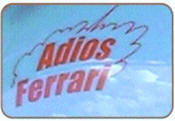 Somehow, this guy had obviously gotten a list of who’s coming down because we observed that he had written across his trunk in red script, “Adios, Ferrari.” “Does that mean us,” I asked Stuart. “I don’t know, Fabio, but we’re the only one here.” Indeed, we were — we had the only prancing horse in the race. It was a fact that was happily recognized and much appreciated by all concerned. About that time we really started to get the rhythm of the deal, to catch the spirit, so to speak. So, responding to a question regarding our team’s official name, it seemed obvious to introduce ourselves as the Ferrari Users Club. North American or South American chapter? We looked at each other, smiled, then said all in unison (just like we were in church), “Yeah buddy, Ferrari Users Club North America — FUCN’A!” It was a great ice breaker. When asked, “Excuse me, are you here with the Ferrari?” “FUCN’A!”
Somehow, this guy had obviously gotten a list of who’s coming down because we observed that he had written across his trunk in red script, “Adios, Ferrari.” “Does that mean us,” I asked Stuart. “I don’t know, Fabio, but we’re the only one here.” Indeed, we were — we had the only prancing horse in the race. It was a fact that was happily recognized and much appreciated by all concerned. About that time we really started to get the rhythm of the deal, to catch the spirit, so to speak. So, responding to a question regarding our team’s official name, it seemed obvious to introduce ourselves as the Ferrari Users Club. North American or South American chapter? We looked at each other, smiled, then said all in unison (just like we were in church), “Yeah buddy, Ferrari Users Club North America — FUCN’A!” It was a great ice breaker. When asked, “Excuse me, are you here with the Ferrari?” “FUCN’A!”
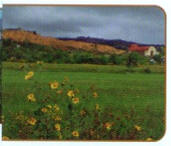 We had two days before the race started which was really good. First of all, we were all tired, especially the guys who had flown down, and it took a little time to “get our ducks in a row.” We were required to undergo a brief physical exam — in about 30 seconds I was pronounced fit, but balding, and sent on my way — my blood pressure was lower than it had been in two years. Then we checked out the Corona girls, a gaggle of lovely young ladies made available by the race’s big sponsor, Corona, to assist the racers. They were very very nice and several of them seemed unusually attracted to me. “What do you think, G-man? Don’t you sorta’ feel they’re paying a lot of attention to me for some reason?” “Yeah, they’re interested in you, Fabio. The sun shining off your bald head is helping them with their tans.” “Are you serious, man?” I implored him. “FUCN’A,” came his reply.
We had two days before the race started which was really good. First of all, we were all tired, especially the guys who had flown down, and it took a little time to “get our ducks in a row.” We were required to undergo a brief physical exam — in about 30 seconds I was pronounced fit, but balding, and sent on my way — my blood pressure was lower than it had been in two years. Then we checked out the Corona girls, a gaggle of lovely young ladies made available by the race’s big sponsor, Corona, to assist the racers. They were very very nice and several of them seemed unusually attracted to me. “What do you think, G-man? Don’t you sorta’ feel they’re paying a lot of attention to me for some reason?” “Yeah, they’re interested in you, Fabio. The sun shining off your bald head is helping them with their tans.” “Are you serious, man?” I implored him. “FUCN’A,” came his reply.
There seemed to be two distinct types emerging. One group was there on a mission — they were serious, well sponsored, well prepared and very experienced. That was not us. We fell into the other category which covered the waterfront from knowledgeable to clueless. (I’ll trust you to decide where the FUCN’A belonged on that scale.) We were, in any case, well prepared mentally. Our goals, so important to articulate in a situation like this so that everyone “gets it,” were to come home alive, not destroy the car, and have a good time. This motto was repeated often, usually in Latin (thanks to G-man’s Catholic school training), and almost always accompanied by some of Corona’s fine product.
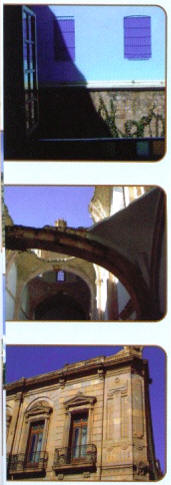 At the drivers’ meeting, we were given a quick overview of the rules and provided with a route book. It was a two inch thick volume including detailed maps of each section showing all the curves with accompanying numbers indicating their severity. “What does ‘curva peligroso’ mean” I ask G-man. He thought for a minute and replied, “I think it has something to do with the Corona girls, there Fabio. But I’m not real sure.” We were soon to learn a lot more about dangerous curves, no guard rails, free roaming cattle and mountainous Mexican roads!
At the drivers’ meeting, we were given a quick overview of the rules and provided with a route book. It was a two inch thick volume including detailed maps of each section showing all the curves with accompanying numbers indicating their severity. “What does ‘curva peligroso’ mean” I ask G-man. He thought for a minute and replied, “I think it has something to do with the Corona girls, there Fabio. But I’m not real sure.” We were soon to learn a lot more about dangerous curves, no guard rails, free roaming cattle and mountainous Mexican roads!
The big day arrived on Friday and we headed to downtown Tuxtula where we were greeted by an enormous crowd of wildly cheering, very excited citizens. This race is a big deal, we were discovering, and there we were ready to strike out up the country some 1,800 miles with little or no clue about what lies in store. Tuxtula is at sea level, surrounded by jungle, and it’s hot! G-man had gotten us both a set of Stirling Moss one layer Nomex at a yard sale somewhere, and we were still burning up. We struggled to get the last buttons in place (it’s the heat, not the tacos) and crossed our fingers as the line moved toward the official Corona starting gate, an inflatable beer bottle the size of Apollo 13. We were hot, scared and itching. Putting old 8779 in gear, revving up everything we had, we crossed the podium to the announcement, “From McRae, Georgia, United States of America, car number 351, Ferrari!” “Did Stirling Moss actually wear one of these damn suits in Mexico,” I shouted at G-man. “Don’t talk, Fabio. We have some dangerous curves ahead!” Was he ever right!
The race is made up of two stages. One is based on your time through speed sections, which vary in length from eight to ten miles. These are started at a certain point on the regular highway. According to the drivers meeting, the road will be closed to other traffic, so one shouldn’t meet an oil tanker coming in the opposite lane. We weren’t entirely sure about this, being new and all, so it took a little time to really accept the fact that the coast was clear. Other, more experienced guys took advantage of our shyness and, uhm... well, passed us. That was perfectly o.k. with the FUCN’A team (remember the mantra). But when the Hudson Hornet blew by us we had to bite our lips. Suddenly, up ahead, the Hudson was spinning wildly in the road and I reminded G-man that the race doesn’t always go to the swift. The words were barely out of my mouth when the Hudson, gathered in, passed us again. This was the first Hudson I’d ever seen out on the road, and he’d gone by me twice in 30 seconds. We had a lot to learn.
Many words of caution had been used in the last day or two to remind all the drivers to be especially cautious on the first stages. Get to know the roads a little, get your car and yourself acclimated, try to avoid dying on the opening day. Unfortunately, Dott. Testosteroni was out in force. When I saw puffs of smoke down in a valley thousands of feet below us, I asked my navigator if there was a factory out there. “Nope” he said, “but I don’t think that red 54 Ford is going to make it to the awards banquet on time.” This was scary: it was a long way off of those mountains. But we were doing just fine, thank you, keeping our Nomex clean and staying on the road. That’s how the first day and the rest of the week turned out — driving fast but safe and repeating the old mantra.
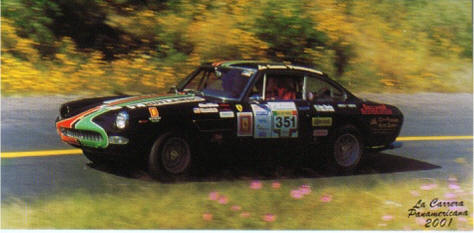
The entrants you would have expected to be the leaders did indeed lead the pack. The order was announced every night at the drivers’ meeting and tequila festival. The finishing order of each day set the departure time for the next, so the FUCN’A was always free to tarry a bit over breakfast each day. Our rooms were all arranged every night when we arrived in a city. And, without fail, they were easy to find., once we got a good cab driver to lead the way.
Every morning around 10:00 or so, there was a scheduled stop for everyone. That gave the people in the support vehicle (Mrs. Gallagher’s nice Expedition, in our case) a chance to catch up and hang around the real men. Having an empty trailer soon endeared us to a guy with a dead 356 and it was good fun watching Ned load the little baby on our prancing horse “Porsche hearse.” Later on, the Porsche got back on the road and we carried the Henry J which had mysteriously expired when its mechanic misjudged the revs and got it just a little over 10,000 for just a second.
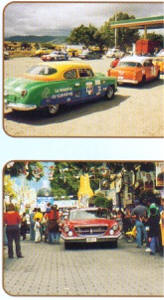 Among this group of serious car nuts from all over the world was a bunch of really good guys. Everyone was always more than happy to help someone else. I’m sure, in fact, that you could have gotten your frame straightened, a rear end rebuilt or CPR performed if you had needed it. Naturally, as the heat, the mountains and the pace began to take their toll on the contestants, “How’s that Ferrari running” was a frequently asked question. But by day four, the line had changed to, “Boy, that Ferrari sounds good.” Indeed, it did. It was an absolute pleasure to drive the old car fast but safely every day under all kinds of conditions over some very, very challenging roads, up over 10,000 feet and never have anything Ferrari misbehave. Our only excitement came one afternoon when the Delco (read, GM) alternator that I’d put on the car in 1991 (and was too cheap to change) started going a little weak in the knees. That was taken care of almost immediately when Ned found a guy who operated a combination taco stand and alternator repair shop in Zacatecas. Seeing to this repair gave Ned, our chief (and only) mechanic, a new sense of importance since he’d previously only been called upon to load up stricken cars. And he got to sample the tacos while he waited.
Among this group of serious car nuts from all over the world was a bunch of really good guys. Everyone was always more than happy to help someone else. I’m sure, in fact, that you could have gotten your frame straightened, a rear end rebuilt or CPR performed if you had needed it. Naturally, as the heat, the mountains and the pace began to take their toll on the contestants, “How’s that Ferrari running” was a frequently asked question. But by day four, the line had changed to, “Boy, that Ferrari sounds good.” Indeed, it did. It was an absolute pleasure to drive the old car fast but safely every day under all kinds of conditions over some very, very challenging roads, up over 10,000 feet and never have anything Ferrari misbehave. Our only excitement came one afternoon when the Delco (read, GM) alternator that I’d put on the car in 1991 (and was too cheap to change) started going a little weak in the knees. That was taken care of almost immediately when Ned found a guy who operated a combination taco stand and alternator repair shop in Zacatecas. Seeing to this repair gave Ned, our chief (and only) mechanic, a new sense of importance since he’d previously only been called upon to load up stricken cars. And he got to sample the tacos while he waited.
The other part of the race was the part I actually enjoyed the most. The high-speed “transit” stages took you from one timed section to the other. These were sometimes long, often very open stretches of highway where the local police, while not completely closing the road, guarded the intersections so you could put the pedal where it belongs. The police would also step out into the road and give you a big wave, especially if your Ferrari was running over 100 mph.
Like probably nowhere else in the world today, here, in this race, we were driving the car in a way which Enzo himself would have appreciated. Nobody was claiming to be Phil Hill, but we gave an old road car all it wanted, and it was more than up to the task. Serendipitously, the oil temperature gauge, which hadn’t worked in ten years, came to life and read “Normale” after an afternoon run where we exceeded 135 mph for ten or fifteen miles. I also felt myself coming to life, feeling the wind in my scalp, enjoying the fine company of Stuart, Ned, G-man, and having a blast.
Our Mexican hosts were all just exceptional people — friendly, happy to have us there, and the kind of people you’d make a special effort to see again. Our race was safe, well organized, just crazy enough to be thrilling, and complete fun! All of this was only amplified by the fact that we were driving a Ferrari. Oh sure, a 330 isn’t the coolest car in the world, there are lots of more expensive and exclusive Ferraris rides (o.k., all of them), but for us, actually down there in Mexico, doing it, running the Carrera... well, I don’t think any other prancing horse anywhere was having as much fun!
The week flew by and we woke one day to face the 350-mile final run from Zacatecas to Nuevo Laredo. The weather had been perfect, the car was running flawlessly, and we had only to reach the finish line to cap off a fantastic week. With just a bit of apprehension (remember the thrill of victory/agony of defeat guy), we suited up and hit the road. Just like every day before, 8779 ate up the road, and really seemed to just get better the more we added the miles. Suddenly, up ahead, G-man spied the race leader, a Corona sponsored ‘55 Studebaker, slowing down as we approached the mountains near Monterrey. What a moment! We shot by waiving furiously only to notice that the driver, a three time world rally champ, was using this moment to change into his dress clothes for the award ceremony and the cameras. No matter — we had passed his ass! Of course, as gentlemen, we allowed them to retake their rightful position just before the checkered flag fell in front of thousands of cheering fans.
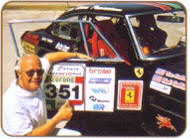 It was 4:30 p.m. on Friday, a long week since we had started, and we had made it all the way! We were swarmed over by the crowd, autograph seekers and the Corona girls seeking one more shot of the old bald guy. We high fived like we’d just won the Super Bowl, and to us, in a way we had. What a feeling!
It was 4:30 p.m. on Friday, a long week since we had started, and we had made it all the way! We were swarmed over by the crowd, autograph seekers and the Corona girls seeking one more shot of the old bald guy. We high fived like we’d just won the Super Bowl, and to us, in a way we had. What a feeling!
Later that night, saying so long to a room full of friends at the awards dinner, I called our little team together to do the mantra thing one more time. In a soft voice I asked them to repeat after me: “Let’s finish the race, don’t wreck the car, have fun, and... by God, let’s do it again” “FuCN’A” came their cheer!
We had covered 2,933 miles in seven days, gone really fast, driven an old Ferrari through Mexico, finished 28th overall in the race, lived to tell the tale, and won a fire extinguisher!
Prancing Horse #142
Copyright © 2002, Ferrari Club of America Inc.
Reprinted with permission of Ferrari Club of America
